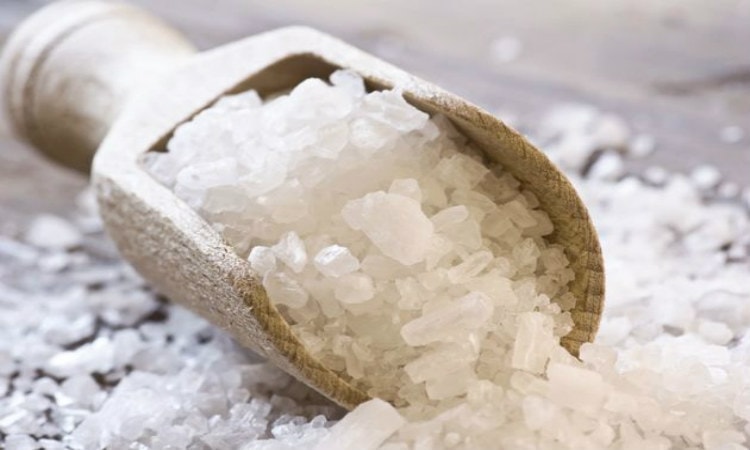NaCl. It’s the molecular formula for table salt. It seems so innocent when it’s looked upon at the molecular level, but sodium – the way you might recognize salt on a food label – is anything but.
Most people eat an average 3,400 milligrams of sodium per day – well over the USDA’s recommended 2,300 milligrams per day, and 1,500 milligrams for those with hypertension, diabetes or chronic kidney disease. I’ll be the first to tell you, of all the things that I look at on a food label, sodium is not one of them. So I started looking, and I was saddened and disgusted by what I found.
Salt In Common Household Items
Salt is a preservative, so it’s no wonder you find it in almost everything that’s at a grocery store. You’d be surprised by how much sodium is in the foods that most people consider to be healthy. Almond milk: almost 200mg per serving. Peanut butter: 230mg per serving. Pasta sauce (which should really be only vegetables): 480mg per serving.
While you may not have diabetes, kidney disease, hypertension or even be pre-hypertensive, it’s important for you to evaluate your sodium intake. A small amount is essential, but in large quantities – and it’s easy to eat large quantities – it can be dangerous. Excess salt stays in the bloodstream and attracts water into the blood, which increases our the volume of our blood and increases blood pressure. This makes it harder for the heart to circulate blood throughout the body. Salt forces our heart to work harder than it has to.
I’d venture to say that most people reading this article are healthy eaters, or at least health-conscious eaters. I would consider myself a health-conscious eater, but I was still surprised by the amount of salt that I was eating with my “healthy” foods. These are some things you can do to limit your salt intake:
1. Make, Instead Of Buy
Bread, almond milk, pasta sauce, peanut butter…all these things are high in sodium but if you look up recipes for them, they call for little or no salt. Food manufacturers put salt in their products to increase their shelf life, not to change the flavor. Making your favorite pantry/fridge staples at home will guarantee you’ll be eating less salt in no time.
2. Buy Fresh Or Frozen, Not Canned
Unless the can says “no salt added,” you’re almost definitely going to be getting upwards of 200mg of sodium per serving of canned veggies. The very process of canning was meant to preserve, so it makes sense that canned veggies would be full of salt. Using fresh or frozen can be just as easy, and much better for your heart.
3. Let Your Treats Be Treats
Pizza, for example is way up there on the list of things very high in sodium at about 750mg per slice. I love me a good slice of pizza, but only on occasion. It’s always okay to eat those high sodium foods, as long as it doesn’t become a habit.
4. Don’t Add Salt To Anything You’re Cooking
The things we buy at the grocery store have more than enough sodium to meet our daily needs. If you don’t add salt to the food you make at home, you won’t be adding to your intake.
5. Check Your Labels
The “ah-ha” moment for me was when I started checking the labels on the things I was buying. Awareness is power. Whether you keep buying those products or switch to lower sodium alternatives, if you know how much sodium is in each serving of peanut butter, maybe you’ll use a little less on your next PB&J.
As mentioned, salt in itself isn't bad. But as with everything else, it must be consumed in moderation to avoid diseases and keep yourself healthy. What steps are you taking to keep a watch on your salt intake?


